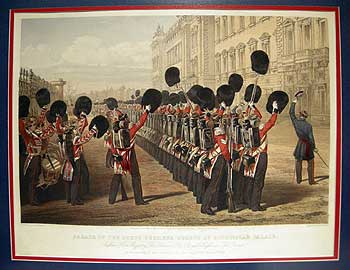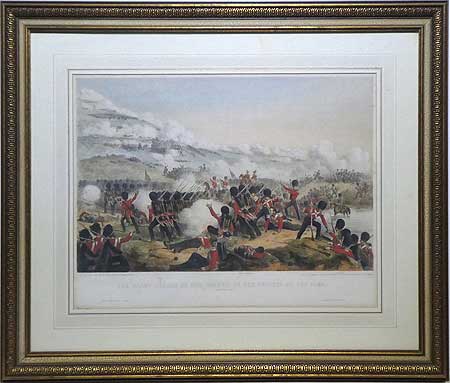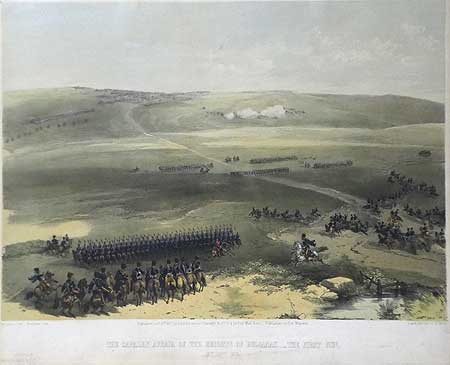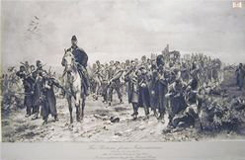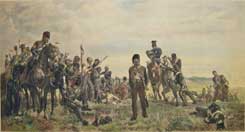"The look on his face from which the sternness of command
had faded, giving place to the grief with which he noted the ravage
of battle in his ranks."
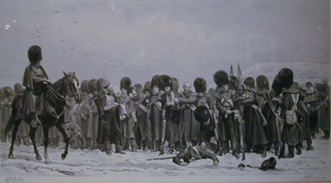
The Roll Call
1874
"I never painted for the glory of war, but
to portray its pathos and heroism."
- Lady Butler, Elizabeth Southerden (neé Thompson) RI. 1846 -1923.
The Roll Call is presented here, we are pleased to offer a rather
fine collection of original antique prints after paintings by Lady
Butler, please contact us for more
more information.
Lady Butler, Elizabeth Southerden (neé Thompson) 1846 -1933. One
of Britain's pre-eminent painters of Heroic battle scenes and particularly
noted for her accurate depiction of regimental dress and horses.
In
1874, she exhibited the painting "THE ROLL CALL" or
to give it its full title "CALLING THE ROLL AFTER
AN ENGAGEMENT, CRIMEA" at the Royal
Academy in London where it caused a
sensation, not just because it had been painted by a woman (a
rarity for publicly acclaimed works at the time) but the more so,
because it took a different approach to the previous format of
heroic painting. In her own words "I never painted for the
glory of war, but to portray its pathos and heroism." Her
masterpiece recorded the pain, shock and suffering of war; the
aftermath and reality of hand to hand combat during the war in
the Crimea.
Crowds flocked to see the painting, so much so, that it was sent
on tour around the country, some 20,000 viewing it in three days
in Liverpool alone! Art connoisseurs vied with each other to purchase
the work , when it became known that Her Majesty
Queen Victoria wished to acquire the painting however, the other bidders agreed
to withdraw and Charles Galloway, the Manchester industrialist,
who had commissioned the work, ceded it to the crown. The artist
receiving £120 for her masterpiece.
Her Majesty did give permission for the work to be reproduced,
and it is the fine deluxe mixed media engraving signed by both
artist and engraver of which there were only 200
copies issued,
(at a published price of 4 gns, 1882), that we are pleased to
offer to discerning collectors of militaria.
Although an archetypal picture showing the condition of soldiers
in the aftermath of battle. Depicted is a mustering of part of
the Guards Brigade in the cold grey light after an engagement during
the Crimean War which many assume to be the Battle
of Inkerman.
The 3rd battalion of Grenadier Guards defended a two-gun Sandbag
Battery against heavy odds amid fierce hand to hand fighting. The
battalion lost 104 officers & men with another 103 wounded. Captain George Higginson (the mounted officer) recalled that barely
200 men responded at roll call.
"The look on his face from which the sternness of command
had faded, giving place to the grief with which he noted the ravage
of battle in his ranks." Meynell, The Art Journal 1898.
In 1999 Her Majesty the Queen gave her permission for the original
painting to be briefly exhibited at the National
Gallery of Canada.
Mixed Media Engraving. Scarce, Artists Proof Before Letters.
Signed Elizabeth Butler, Artist; & W.J.
Hulland, Engraver
(below plate).
Published by The Fine Art Society London. 1 Nov.
1882 with authenticating seal of Printsellers Association London.
Matted.
15 x 29 3/4" excluding
signatures (Ref. RI.272 /ALN/and>AANN)
PRICE CODE F SOLD Click Here for Pricing Details

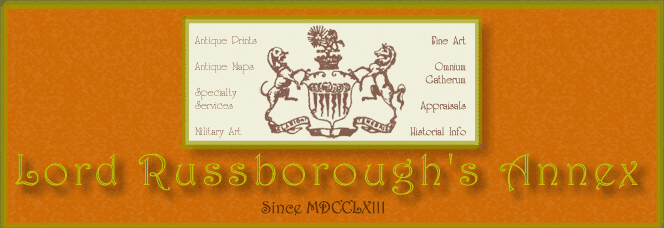
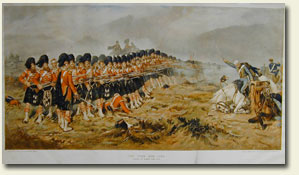
.jpg)
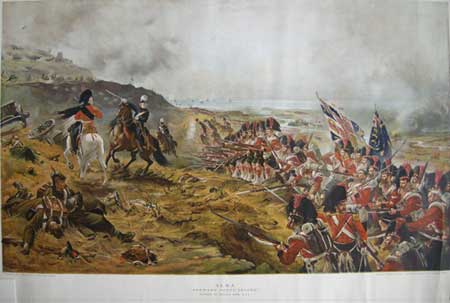

-fu.jpg)
